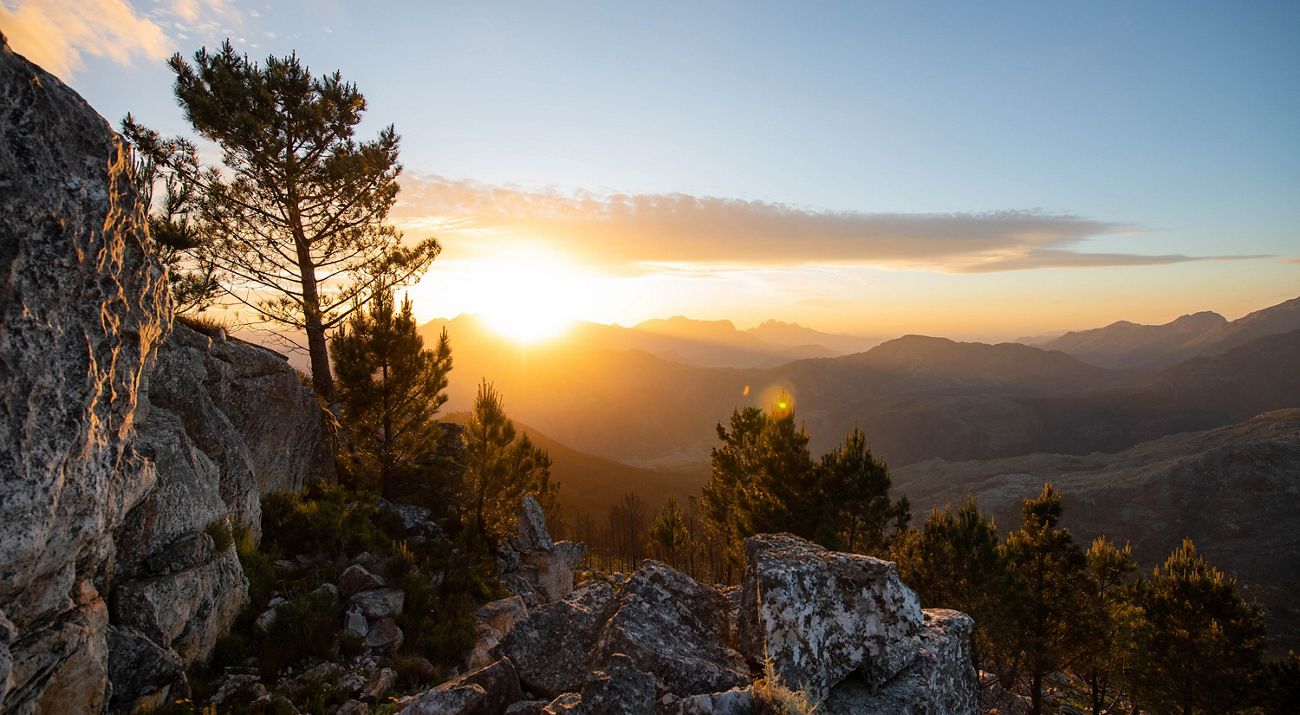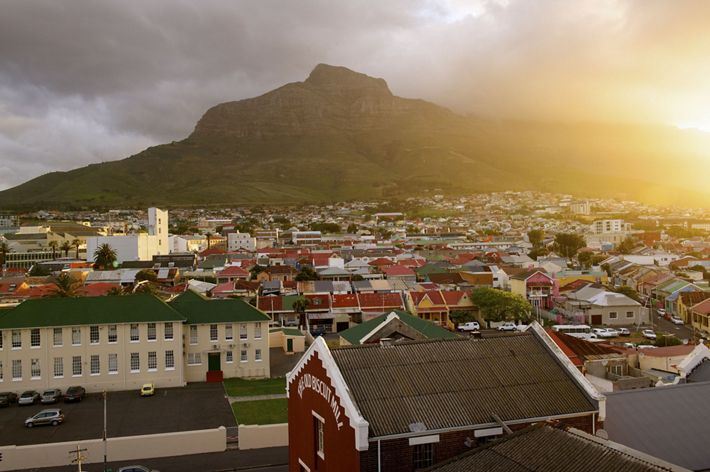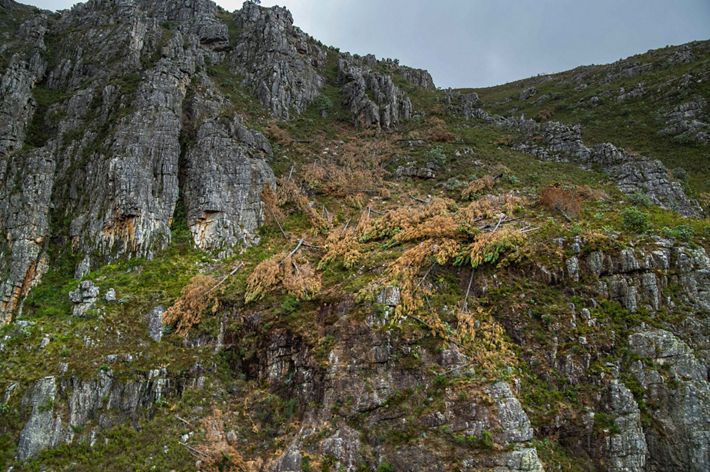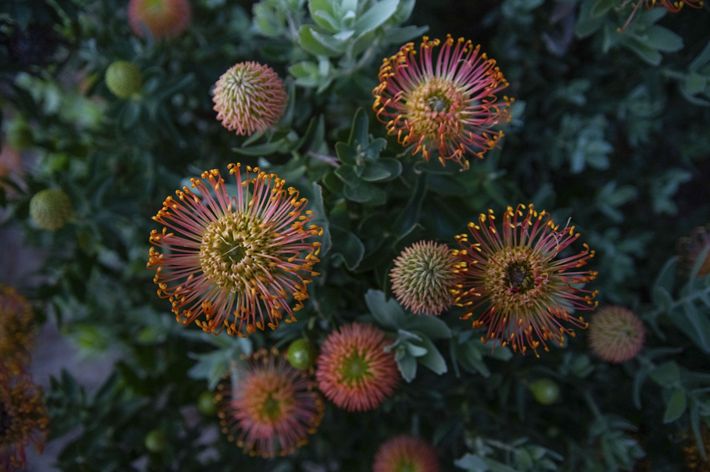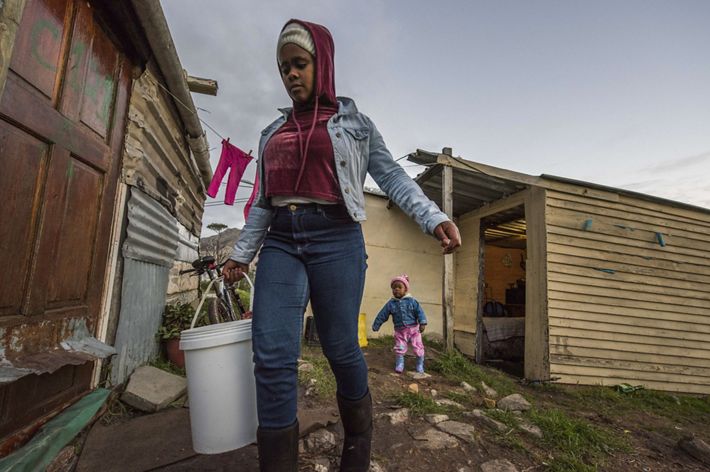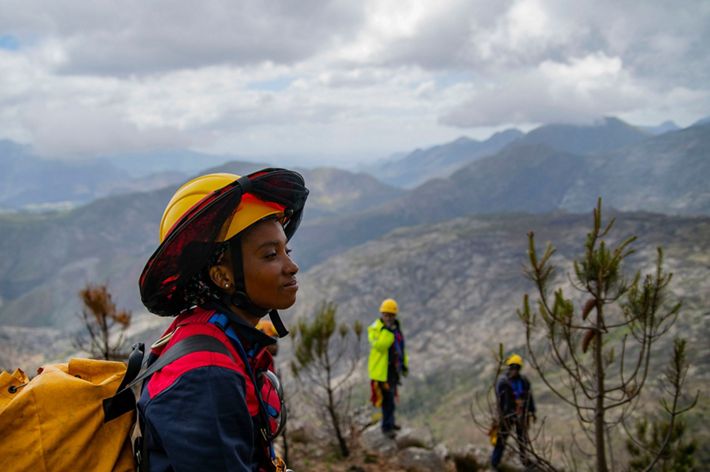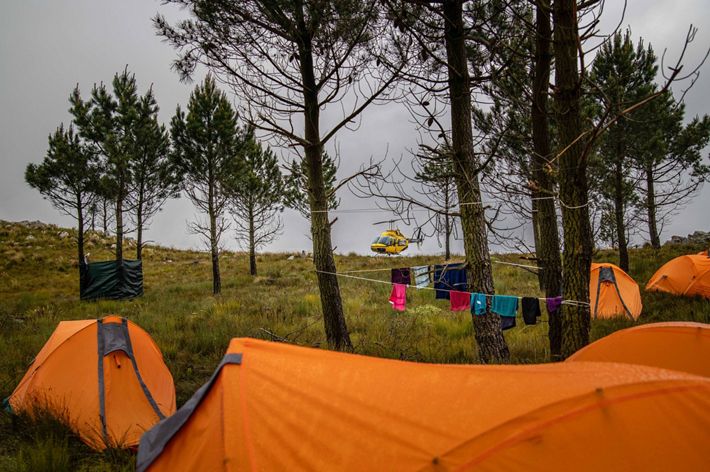Cliff Hanger
After nearly running out of water in 2018, the South African city of Cape Town aims to rid its watersheds of thirsty non-native trees.
Fall 2020
In January 2018, the mayor of Cape Town, South Africa, announced that the city would soon run out of water. On “Day Zero”—predicted to arrive within just a few months— taps supplying most neighborhoods in this city of 4 million would run dry. Residents would be forced to queue up each morning for a water ration of just 6.6 gallons per person—less than a twelfth of the average daily consumption in the United States.
“It was a long time building up to the perfect storm,” says Peter Flower, who served as Cape Town’s director of water & sanitation during the crisis. “Our system relied almost entirely on rainfall, so whilst we had tremendous storage capacity, an extreme drought puts a huge amount of stress on the system.”
A dangerously low water supply
Cape Town’s population has increased by about 40% since 2001. Roughly half of the city’s residents live in informal settlements supplied with only communal taps—and use only about 5% of the city’s water. Still, officials recognized over time that the city’s reservoirs would not be able to meet growing demand, especially from agriculture and more affluent areas. By 2018, an unprecedented three dry winters in a row brought reservoir levels dangerously low. The city’s predicament made headlines around the world, as fearful Capetonians waited in line to buy bottled water or fill jerry cans at a handful of public springs.
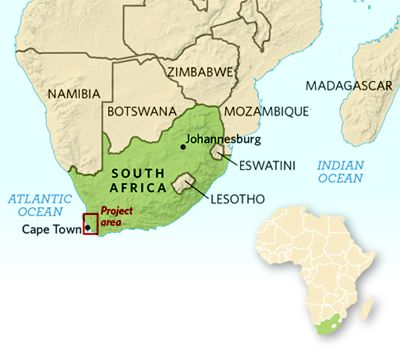
Good luck and white-knuckled management got Cape Town through the crisis, and Day Zero never arrived. But residents were shaken. A vital resource, one that most city dwellers take for granted, had almost disappeared.
“It was a heavy time,” says Cape Town resident Mampho Malawu of those few months. “People were feeling scared, because if there’s not water, people can’t survive.”
What Malawu didn’t know at the time was that she would soon be helping to prevent future crises, working alongside fellow Capetonians to restore a fragile mountain ecosystem that plays a vital role in the city’s water supply. Today, this effort, part of a public-private partnership organized by The Nature Conservancy, is already showing results. It’s a story of hard work, hope and the profound connection between healthy ecosystems and human survival.
The problem with invasive species
The dramatic sandstone peaks soaring over Cape Town are iconic—and a major draw for more than 1 million tourists who flock here every year. They’re also home to one of the planet’s rarest and most vulnerable plant communities, a heathland ecosystem known in Afrikaans as fynbos. Undisturbed by ice ages or other ecological catastrophes for millions of years, fynbos harbors an astonishing 9,000 plant species, two-thirds of which are found nowhere else—among them South Africa’s national flower, the king protea. But they face tough competition from non-native species, especially the acacia, eucalyptus and pine trees that were imported by colonists in the 19th and early 20th centuries.
“They escaped from the timber plantations because they’ve got wind-borne seeds, which are able to move very far,” says Louise Stafford, TNC’s Cape Town-based director of water funds for South Africa. “The pines are the biggest and most problematic invasive in these areas.”
The trees also consume vast amounts of water. A TNC analysis released in November 2018 found that within six years, Greater Cape Town could tap the equivalent of two months’ additional water supply per year by clearing these thirsty non-native trees from watersheds that provide city water. Within 30 years, the removal effort could help the city squeeze out an extra four months’ worth of water per year. And those gains would come at a tenth of the cost of other solutions the city was pursuing, such as desalination and wastewater recycling.
The findings formed a major part of the business case for the Greater Cape Town Water Fund, a collaboration among TNC, other nongovernmental groups, government agencies and corporate sponsors, which Stafford helped launch in 2018.
Quote
A vital resource, one that most city dwellers take for granted, had almost disappeared.
Water funds are public-private partnerships that manage watersheds with nature-based solutions. Instead of focusing on so-called gray infrastructure, such as filtration plants and wastewater recycling, water funds finance “green” infrastructure, using strategies that include forest conservation, wetland restoration and sustainable agricultural practices to safeguard water sources, improve river flow and deliver cleaner water. These upstream projects are largely paid for by downstream users—not only public utilities and local governments but also businesses that require a reliable water supply to operate. The model, which TNC has helped to set up in more than 40 cities around the world since 2000, has successfully improved water quality and quantity for many regions—all while conserving important habitats. (Read more about water funds in Africa.)
How women are helping solve Cape Town's water crisis
In Cape Town, the new water fund would have the added benefit of empowering women. “We wanted to give women the opportunity to enter a field that is normally mostly men,” Stafford says. After gaining experience on water fund projects, women would be able to earn more money, she says. “Their daily wages increase because they now have this extra skill, and their employability into the future is improved.”
Stafford began by recruiting female contractors. In 2018, an all-female team took on a pilot project to remove Australian acacia trees that TNC calculated were stealing nearly half a billion gallons of water a year from the Atlantis Aquifer, just north of Cape Town. The workers cleared nearly 2,000 acres of the thickly growing trees from lower elevations with chainsaws and hedge clippers.
By 2019, the water fund was ready for the next phase: tackling the pine trees that grow on slopes and sheer cliffs in the mountains. Simply reaching these roadless areas would be difficult. Stafford turned to Thandeka Mayiji-Rafu, whose small business works with public agencies and private landowners to clear weeds and invasive species. In early 2019, Mayiji-Rafu began sending specially trained teams by helicopter to sites where they would camp for two weeks. Felling the towering trees could cause dangerous rock slides, so instead the workers rappelled down the steep mountainsides on 500-foot ropes to painstakingly remove a ring of bark around each trunk with a handsaw, a method known as “girdling” that kills the trees. The missions had to be well-planned, and they required not only specialized safety equipment but also good communication and teamwork.
“You have to be able to select the right people,” Mayiji-Rafu says, “The training is very tough. People have to be physically and mentally fit, and they have to like to work and not be afraid of heights.”
One of Mayiji-Rafu’s recruits was Mampho Malawu, whom she soon promoted to supervisor. A member of the Xhosa people, South Africa’s second-largest cultural group, Malawu had previously worked in a grocery store. Despite having no prior experience with invasive-species management, she took to the job immediately, with a determination rooted in her responsibility as breadwinner for several relatives. She found that she loved the challenging work—and that she had a knack for leadership. In September 2019, however, an accident on an unrelated job for the city of Cape Town underscored just how dangerous invasive-species removal can be—especially in steep terrain.
“I lose two fingers,” Malawu says of the incident that involved a loose rope and falling rocks. “I felt so much pain, but I didn’t want my people to see me in pain, because I didn’t want them to be scared to work.”
Malawu now offers her hand as a cautionary tale about the importance of safety. And while she is still awaiting the South African Department of Labour’s decision on her worker’s compensation insurance claim, the accident did not keep her from working on the water fund in early 2020.
What did stop her was the COVID-19 pandemic. In March, South Africa’s government declared one of the strictest lockdowns in the world, which halted all work deemed nonessential and confined most residents to their homes. The water fund restoration teams had already cleared more than 90% of their target for the year when the lockdown began. Still on furlough at press time, Malawu looks forward to returning to work.
It’s a good salary, she says, but it’s also more than just a job.
“I like helping people,” Malawu says, “and I like helping my country.”
Quote
Replacing a single acre of invasives with native fynbos would save more than 85,000 gallons of water annually.
Preventing the next Day Zero
The war against the invasive trees sapping Cape Town’s water supply has only just begun, but there are already signs of success. Last year, a study compared untouched stands of acacia at the Atlantis aquifer with an area the pilot project cleared and concluded that replacing a single acre of invasives with native fynbos would save more than 85,000 gallons of water annually. (Read more about nature-based solutions to Cape Town's water supply.)
“I’m not saying that it’s a silver bullet, but considering the suite of alternative options, invasive-vegetation removal has a big role to play,” says Richard Bugan, the study’s lead author, who is now a monitoring and evaluation manager with TNC. “And not only in terms of water provision, but also in terms of conserving the fynbos—which is a very important biodiversity hot spot—as well as mitigating wildfire risk.”
Bugan and his team are now working on an experiment in remote areas above Theewaterskloof, the region’s largest reservoir. The study will compare multiple “high-angle” watersheds—the areas around steep mountain streams that feed the reservoir—where invasives have and haven’t been removed, in an effort to bolster TNC’s case for continuing the difficult work of clearing non-native trees.
The Conservancy is now developing a plan for continuing the tree removals safely once the strict lockdown is lifted. “The workers are very eager to go back to work,” Stafford says. She is talking with the city and the contractors themselves to develop a plan that will protect workers and their families.
It’s too early to say whether the Greater Cape Town Water Fund will be able to prevent another Day Zero when the next severe drought strikes. But Stafford and her colleagues are optimistic, and they’re taking the long view.
“After the initial clearing, we have to go back every two years, and in some cases every year, over the next 30 years, to keep these areas clear of invasive plants,” she says. “Otherwise it just comes back. But we’ve shown the return on investment. We know this is the most cost-effective way of augmenting water supply, and we can see the importance of collective action.”
Get the Magazine
Become a member of The Nature Conservancy and you'll receive the quarterly print magazine
